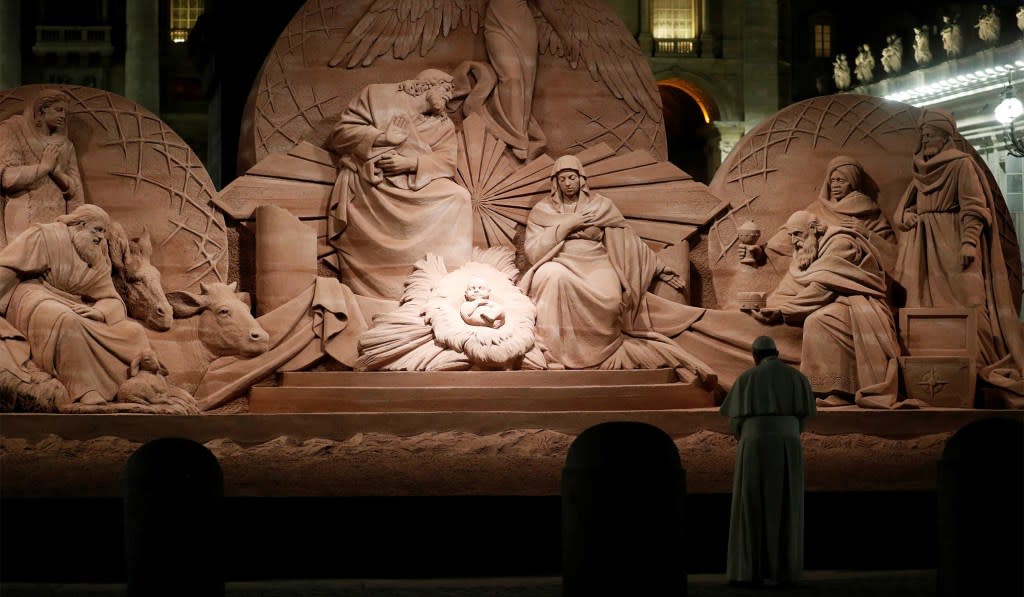The Impossible Idea

A friend of a friend makes a yearly game of defending the Mr. Potter character in It’s a Wonderful Life. If you haven’t seen the film — How? Why not? — Potter is the miserly ogre with a stranglehold on the town of Bedford Falls. The only thing standing between his financial empire and municipal hegemony is one measly institution — George Bailey’s Building and Loan, a small bank that charges the town’s working poor more modest rates than Potter would ever offer — perpetually on the brink of collapse.
My acquaintance argues, tongue partially in cheek, that Potter’s “avarice” serves the common good by accident, in the invisible-hand sort of way familiar to most readers here. In the long run, he claims, Bedford Falls would be better off run by the miserly Potter than the sops at Bailey’s lending house. Bailey’s willingness to hand a sweetheart mortgage to any prole with a pulse in town, creditworthiness be damned, will turn the local economy upside down, he says; he slides his tongue a bit farther in his cheek as he echoes Potter’s quip about Bailey, that the world of Bailey’s creation would create “a discontented, lazy rabble instead of a thrifty working class. And all because a few starry-eyed dreamers . . . stir them up and fill their heads with a lot of impossible ideas.”
I thought of my twice-removed friend and that Mr. Magoo-looking cretin from Frank Capra’s masterpiece as I considered that which binds more than “a few starry-eyed dreamers” — a belief that “stirs them up and fills their heads” with the most “impossible” idea of all, born in a manger, under the reign of Caesar Augustus, some 2,000 years ago.
I admit that it is impossible to mention the Nativity credulously in the age of the Internet and not feel at least a bit oafish. Men today travel to and from the moon. Engineers have nearly perfected the self-driving car. Modern medicine is such that Ruth Bader Ginsburg is still alive. Texts written by — pace Bart Ehrman — first-century Jewish peasants do not exactly tickle the modern’s hyper-rational fancies.
Which is, in many ways, their appeal.
In a letter to his friend, the author Arthur Greeves, C. S. Lewis said he found himself “mysteriously moved” by “the idea of the dying and reviving god [like] (Balder, Adonis, Bacchus) . . . provided I met it anywhere except in the Gospels.” There’s a comfort in the pagan stories; they’re mythic. The Gospel narratives, by contrast, have that gnawing pretense of being historical, falsifiable. The story of Balder and Adonis points to a “greater truth” beyond its allegory; the Gospel insists upon containing the greatest Truth of all within its oblong pages.
A most impossible idea, indeed.
Later in his letter to Greeves, Lewis resigned himself to the fact that the Christian narrative was history’s one “true myth,” similar in all ways to the pagan stories but for the fact that (emphasis his) it “really happened.” The Gospel texts, particularly as they concern the Nativity, are laden with symbolism, making frequent gesture to both the consummation of prophecy and imagery which portends events yet to come. “Today this Scripture has been fulfilled in your hearing,” Christ would later say at the synagogue; His life is at once inextricably bound up in the novelist’s literary devices (foreshadowing, allusion, allegory, symbolism) and the vagaries of reality (born in a barn, a man itinerant with no place for His head, an agony in Gethsemane, the brutality of the cross). St. Maximus the Confessor said in the seventh century that Christ is both the symbol and the symbolized, “a symbol of himself.” No less so at His birth — the magi bring Him gold (a sign of His kingship), the “holy smoke” frankincense (a token of His divinity), and the embalming ointment myrrh (the foretaste of His death). His father Joseph looks on as He is born in a cave; Joseph of Arimathea, wealthy Jewish elder, will later lay Him to rest in a cave. Mary births Him; Magdalene will first find Him resurrected.
A timeless God enters time itself only to die by the hands of men whose hairs He can count and whose every thought He knows. He was born to die, Fulton Sheen said — the only such man in history.
“He is the One through whom all things have been made and, on Christmas, Who has been made in the midst of all things. He is the Revealer of His Father and the Creator of His mother, the Son of God through His Father without a mother and the Son of Man through His mother without a father,” says Saint Augustine.
What if it were true? How could it not be?
“Give me an old-fashioned Christmas,” implores Frank Sinatra. The first-century version will do just fine for me.
National Review Institute (NRI) is the nonprofit 501(c)(3) journalistic think tank that supports the NR mission and 14 NRI fellows (including this author!), allowing them to do what they do best: Advance principled and practical conservative journalism. NRI is currently in the midst of its End-of-Year Fund Appeal and seeks to raise over $200,000 to support the work of the NRI fellows. Please consider giving a generous end-of-year tax-deductible contribution to NRI. Your gift, along with all those from the NR Nation, will provide the essential fuel for our mission to defend those consequential principles for which National Review has fought since 1955, and for which, with your support, it will carry the fight far into the future. Thank you for your consideration.

